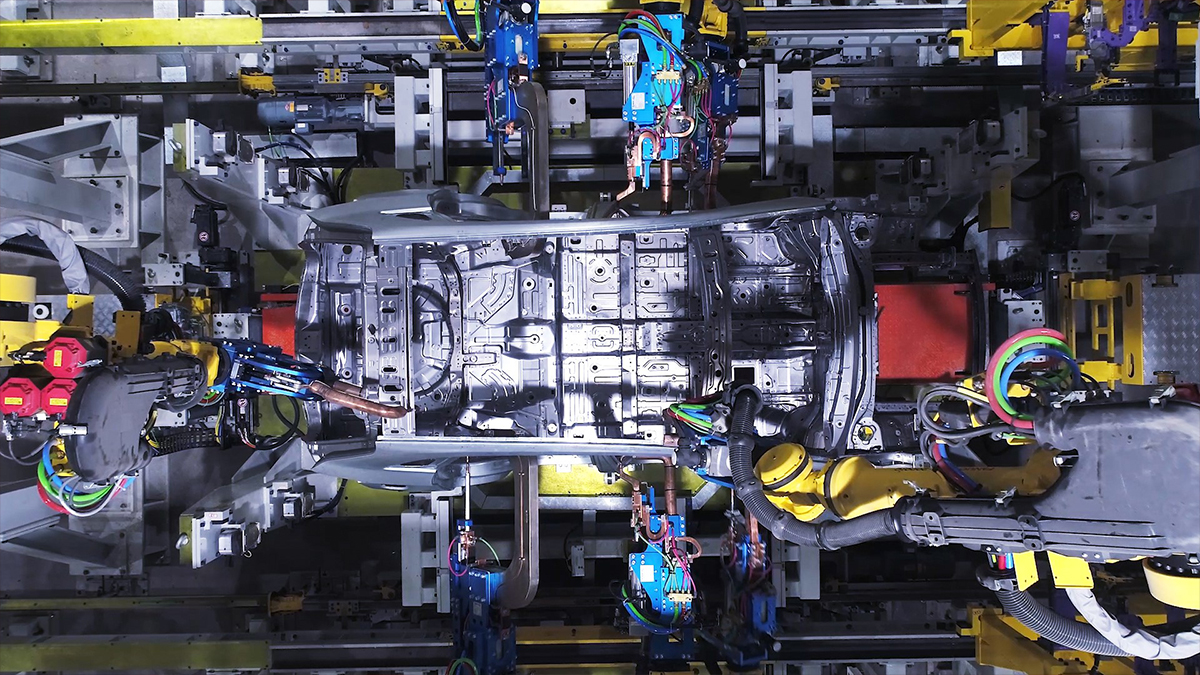After the beginning of winter, the lowest temperature in Beijing has dropped below 0℃, and along with the continuously dropping temperature, the driving range of pure electric vehicles also decreases. In order to solve the problem of winter driving range, WM Motor has launched the second-generation battery thermal management system.

Why Does the Driving Range of Electric Vehicles Decrease in Winter?
In order to help everyone better understand how the WM Motor’s second-generation battery thermal management system “prescribes the right medicine,” I will first explain why the driving range of electric vehicles decreases in winter.
There are three main reasons:
First, the electrochemical characteristics of lithium-ion batteries.
Currently, lithium-ion batteries achieve energy storage and discharge through the movement of lithium ions between the positive and negative electrodes. However, in an environment with low temperatures, the activity of the electrolyte decreases, causing the movement of lithium ions from the negative electrode to the positive electrode to be less smooth, which will lead to a reduction in the battery’s discharge capacity.
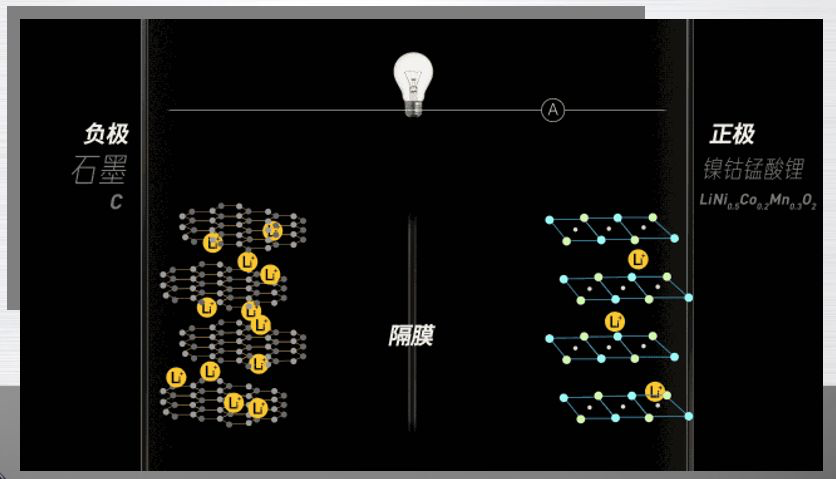
The most direct result of a decrease in discharge capacity is a reduction of the battery’s capacity, which leads to a decrease in driving range. At temperatures below 0℃, the actual usable capacity of a battery is only about 90% of that at 25℃.
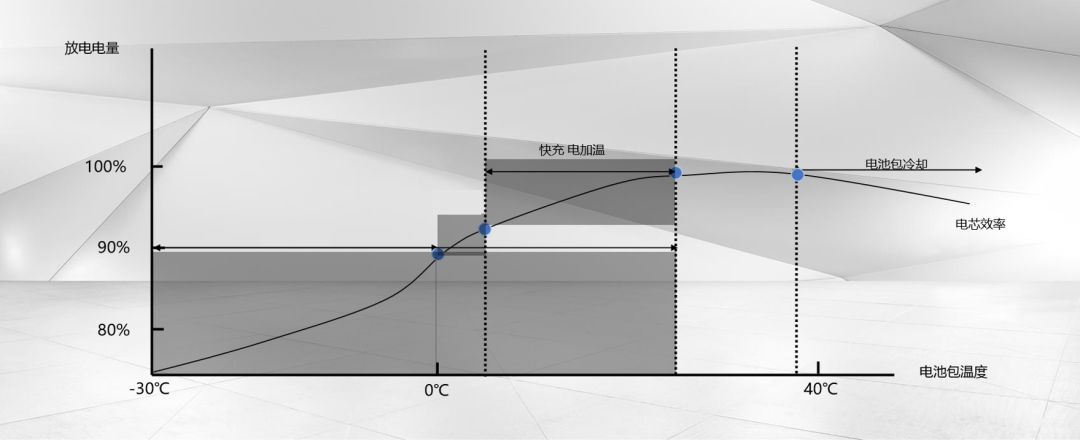
In addition to affecting the discharge capacity of the battery, low temperatures also have a significant impact on the charging speed.
Using high-power charging in a low-temperature environment can cause lithium precipitation on the negative electrode, which not only causes irreversible damage to the battery, but the lithium ion crystals can also pierce through the membrane between the positive and negative electrodes, causing an internal short circuit and leading to battery accidents.
We also made a video comparison of the impact of low temperatures on driving range and charging speed How Far Can the WM EX5 Drive in Winter? | Owner Visit.
Second, battery pack heating consumes power.To avoid the negative impact of low temperature on the range and fast charging efficiency, most electric vehicles are equipped with PTC battery heating systems for the battery pack. The principle is simple: by heating the cooling liquid through the electric heating wire and circulating the heat to the battery pack through the pipes inside the pack, the battery pack is effectively heated.
After the battery pack is heated to an appropriate working temperature, the range and charging speed naturally return to normal. However, inevitably, a certain amount of energy is consumed to generate heat in order to heat up the battery pack, and this energy can only come from the battery pack.
Thirdly, heating the cabin in winter consumes battery power. Unlike gasoline-powered cars that can make use of the excess heat generated by the engine to produce cabin heating, electric vehicles can only rely on electric heating to achieve that. As for how much power electric heating consumes, one can refer to the power of home heaters, which is typically between 2000-3000 W. The power consumption of a car’s cabin heating is even greater. When part of the battery power is consumed by the air conditioning system, less is left for driving the car, resulting in a decrease in range.
Now that we understand the above three reasons, it is clear that solving the issue of heating can go a long way in solving the range problem of electric vehicles in winter. Next, let’s take a look at what WM Motor did to tackle this issue.
What is the WM Motor Second-generation Battery Thermal Management System?
The core of this system is to use a diesel heating system to replace the electric heating system in the vehicle, i.e., by burning diesel, which operates on the same principle as a gas water heater at home.
Compared with the first-generation system, the main difference of the second-generation oil-electric heating system is that it can direct the heat generated by burning diesel into the cabin, reducing the consumption of air conditioning.
In the first-generation system, the heat generated by burning diesel can only be used to heat the battery pack, but in actual use, the power consumption for battery heating is not high. In contrast, the power consumption of air conditioning is the main issue. Besides, the power consumption of air conditioning is proportional to driving time, and the more severe the traffic congestion, the higher the power consumption per kilometer.
In a test where the test vehicle was cold-soaked for 13 hours at -7℃, and the temperature was set to 21℃ and then raised to 23℃ with maximum air conditioning, the second-generation thermal management system showed a 2% increase in discharge compared to the first-generation, and the power consumption of air conditioning was reduced by 13.24 kWh. For WM EX5, this is equivalent to an increase of 100 km in NEDC range. The test results are evident, and we are excited to see the real-world performance of this system in winter.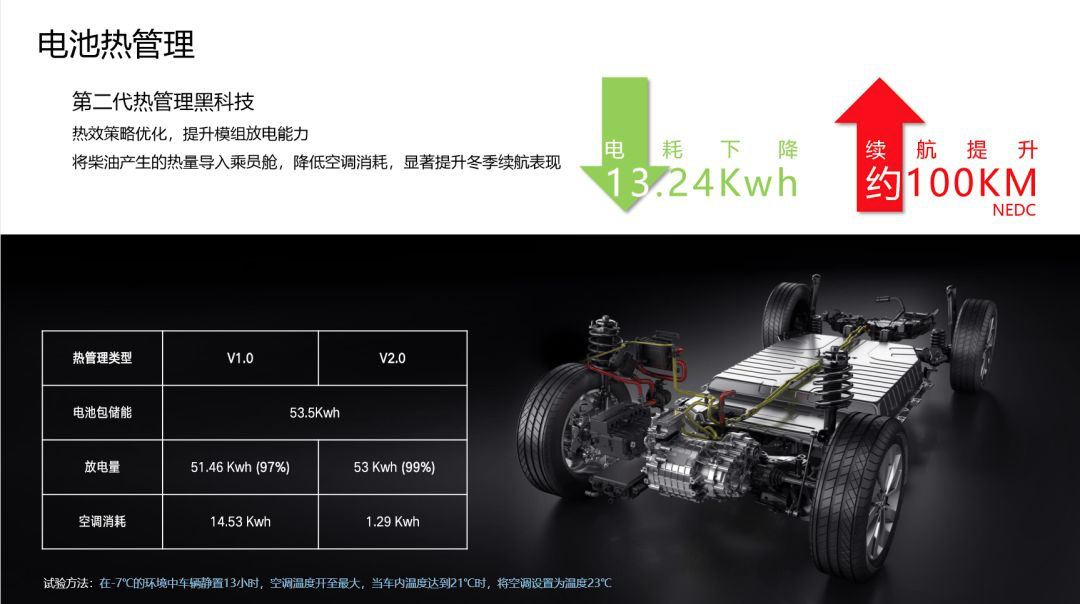
In this generation of upgrades, WM Motor has taken targeted measures.
However, according to the official published curve chart, the system only uses fuel heating below 0℃, and electric heating above 0℃. Here, I hope that WM Motor can make some adjustments to the strategy, and start fuel heating at temperatures below 10 degrees Celsius, or give car owners the option to choose the temperature node for fuel heating.
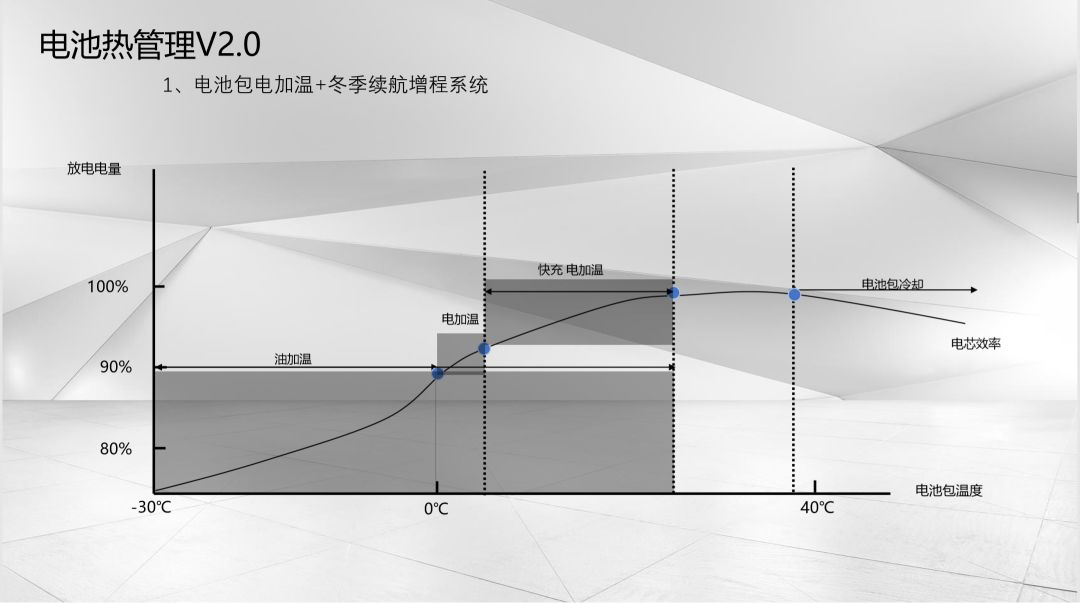
When the temperature drops below 10℃, it is already necessary to heat up the battery pack to achieve the optimal working temperature, and passengers in the car also have a demand for heating and air conditioning. Moreover, for consumers, since they have chosen to install this fuel heating system, it means that they are willing to use fuel instead of electricity to save more electricity for driving the vehicle.
Finally, there are two points for consumers who are preparing to buy a car:
First, what is the capacity of the fuel tank, and how long will it last after one refuel?
The fuel tank capacity is 10 liters, and it needs to be refueled about every 20 days when used for 2 hours per day.
Second, do I need to choose to install it?
Yes.
Currently, only the WM EX5 520 model and the upcoming WM EX6 model to be released at the Guangzhou Auto Show can choose to install the second-generation battery pack oil-electric heating system, with a price of 9800 yuan, which is 1800 yuan more expensive than the first generation, which cost 8000 yuan.
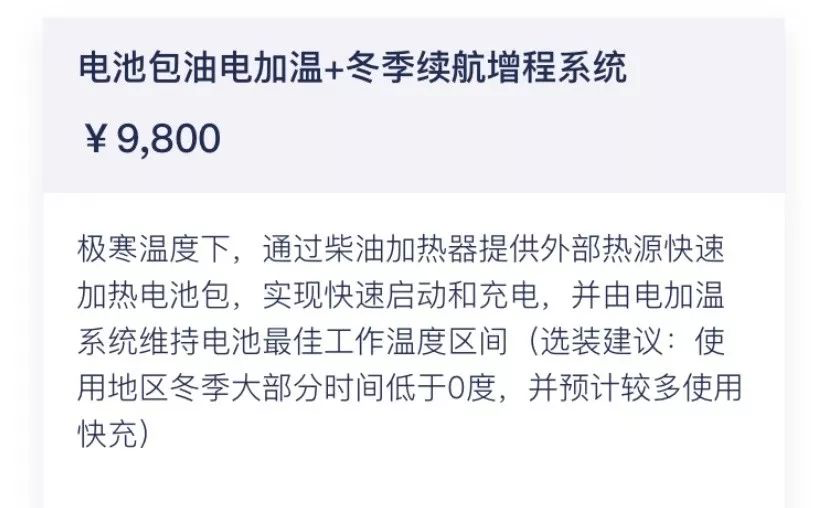
It is not cheap, but according to official testing, the effect is significant. WM Motor has greatly improved the experience of using electric vehicles in extremely cold weather. It is recommended that car owners who intend to use it when the winter temperature is below 0℃ choose to install it.
Users who can accept a certain degree of range attenuation in temperatures above 0℃ may not need to choose to install it, but the 2880 yuan battery pack heating system must be selected. Even in relatively southern regions such as Zhejiang and Fujian, this can significantly improve the user experience of electric vehicles.
Winter is coming, are you ready?
Tesla Gigafactory 4 is located in Berlin, Germany, Volkswagen Group invests over 10 billion to build the MEB pure electric vehicle platform, and Maserati transforms its Turin factory to adapt to the production of pure electric vehicles. These measures show that all car companies have begun to recognize the path of electrification, and have transformed their research and development and manufacturing for pure electric vehicles.The winter range issue of electric vehicles is a problem facing the whole industry. If the range issue of electric vehicles cannot be solved in cold areas, how can we talk about the trend of electrification? The day when electric vehicles completely replace fuel cars must be the day when the driving experience under all conditions exceeds that of fuel cars.
This is also a problem that traditional car manufacturers have to face after entering the market. Not to mention the methods used, WeiMa has greatly improved the experience of using electric cars in extremely cold weather, at least in terms of results. As for how to solve the winter range problem of electric vehicles from the root, we look forward to more solutions proposed by other car manufacturers.
This article is a translation by ChatGPT of a Chinese report from 42HOW. If you have any questions about it, please email bd@42how.com.
